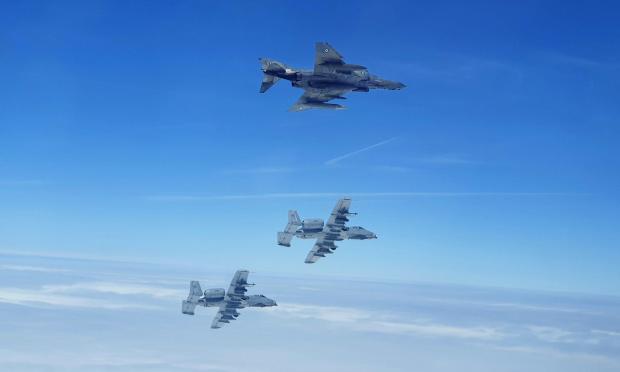The Turkish defense industry is in a state of frenzy, which is preparing a number of technological achievements to achieve the "Blue Homeland" and "Great Roumeli" plans by the Erdoğan regime, clearly and without hesitation threatening Greece-Cyprus.
According to the head of the Turkish defense industry I. Demir, the goal is to reach a level of technology similar to the S-400 in 5-6 years.
“Of course, until that time, Russia will be actively using the S-500.
But while there's this bearish trend in Russia and bullish trend in Turkey, that's how we're going to outperform Moscow in the medium term. The USA and Israel will remain as competitors in front of us", he emphasizes.
According to Western media, the range of the TAYFUN missile is to be increased.
The manufacturing company plans to increase the missile's range to 1,000 kilometers (621 miles).
Thus the Turks intend to create a short-range ballistic missile of 300-1,000 kilometers (186-621 miles).
This will be the first Turkish missile that does not comply with the Missile Technology Control Regime (MTCR).
Before that, Turkey unveiled the Bora-1 ballistic missile in 2017 with a range of 273 kilometers (170 miles).
This Roketsan missile is already operational with the Turkish Army.
As a reminder, the MTCR agreement obliges signatories not to export drones or missiles with a range of more than 190 miles and a payload of more than 500 kilograms (1,102 pounds).
SİPER Product-1 is an extremely important long-range air defense system for Turkey!
The well-known Turkish institute of advanced technology TUBITAK reported that the SIPER Product-1 missile can reach the upper limit of neutralization of all known warplanes currently flying, implying the Greek F-16V and Rafale-F3R.
From Sinope and the Greek enslaved Pontus, the neo-Ottomans "threaten" Greece by continuously testing new missiles.
Until now, the Turkish Army has served 36 F-600T Yildirim launchers with a range of 150 km, while the existence of T-300 Kasirga rockets with a range of 100 km is also important, which will also begin to be delivered.
However, the addition of the Bora missile to the Turkish arsenal is expected to create multiple problems for the Greek defense with the dominant conclusion being that we are now dealing with a Turkish ballistic force.
Erdogan is trying to consolidate his political power by taking advantage of developments in the defense industry, presenting all the achievements of recent years as if they were the result of activities carried out under his rule.
Contrary to Erdogan's claims, the achievements of the Turkish defense industry today are not only due to his 20 years in power, but are mainly based on the strategic decision of the Turkish Armed Forces in the 1990s to pave the way for the co-production of missile systems, under license to Turkey for technology transfer.
Turkey has the following missile systems in its arsenal:
1.Kasırga, with a range of 100 kilometers.
2.Yıldırım, with a range of 150 kilometers and an accuracy of 150 meters.
3.Bora, with a range of 300 kilometers and an accuracy of 50 meters (essentially Yıldırım with a longer range).
4. Tayfun with a range of 561 kilometers so far, with a chance according to Erdogan to reach 1000 kilometers.
If we proceed with the installation of the above missile systems in hypothetical positions at a short distance from the coasts of Asia Minor on a yacht, based on their ranges, it follows that all our islands east of the 25th meridian, at which Turkey wishes to bisect the Aegean, imposed by the above systems.
One solution would be for our country to acquire A-10 Warthog aircraft, whose mission is to provide mass close air support fire against enemy targets on the ground, among other things.
US CENTCOM, the US Middle East and Central Asia Command, now has a squadron of Warthogs.
Despite their announced retirement, the A-10 Warthogs available to US CENTCOM have been upgraded, with the idea of becoming "bombers".
Indeed, thanks to a software update, these can now carry up to 16 GBU-39B bombs. This configuration was recently tested by the 422nd Test and Evaluation Squadron at Nellis Air Force Base in Nevada.
"We can consider using a network of US and allied radars to guide attack aircraft to their targets," US General Grynkewich said.
From the above, it appears in general that our country should take advantage of the opportunity in the current phase and acquire American weapons systems that are withdrawn from the superpower, to strengthen its deterrent capacity, especially in possible future missions to the coasts of Asia Minor.


